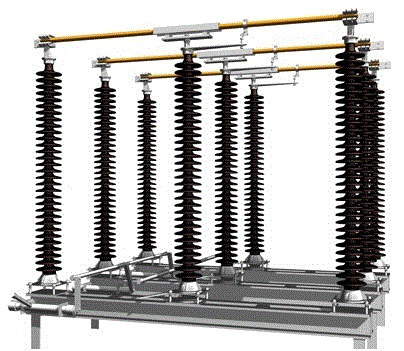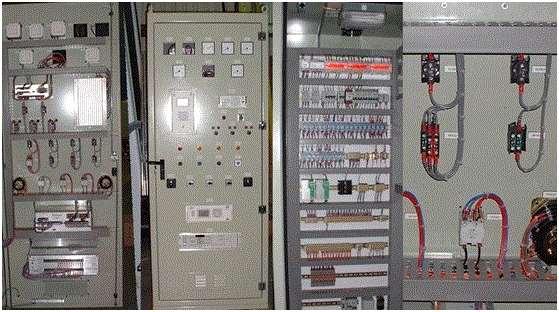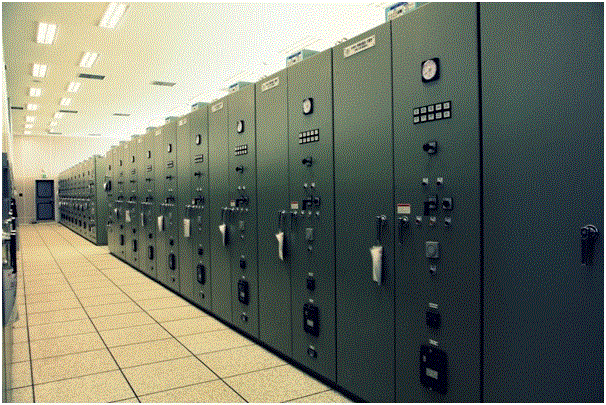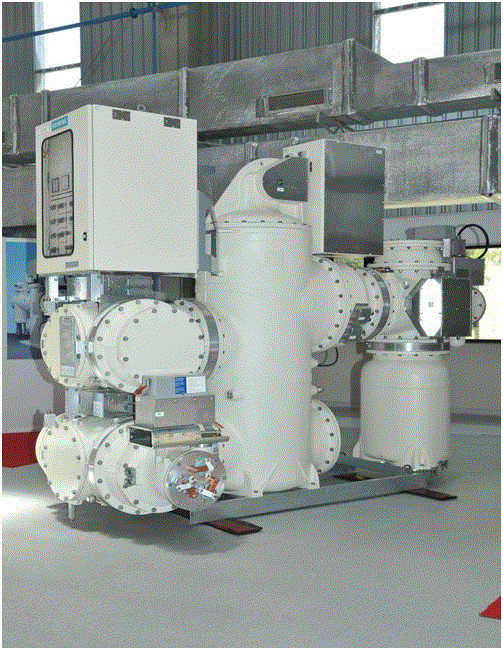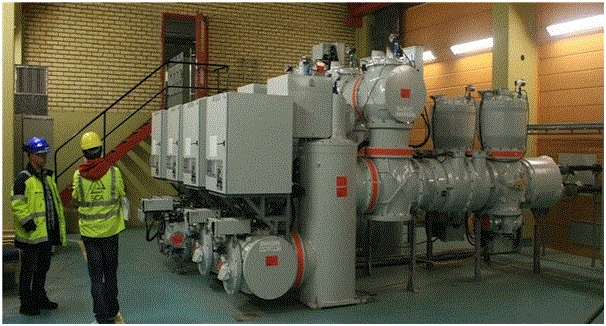Control of Group Operated Switches (GOS) from workstation
Control of Group Operated Switches (GOS) from workstation
The group operated switches ( GOS ) located in the field can be monitored and remotely operated from the control centre. The GOS is coupled with a motor and this motor gets a command from the workstation and either opens or closes GOS accordingly. GOS is a part of switchgear. Let us see GOS and switchgear in detail :
Isolator switch (Group operated switches)
Isolators are known as disconnector or isolator switch. Isolator is used to make sure that anelectrical circuit can be completely de-energized for service or maintenance. Such switches are often found in electrical distribution and industrial applications where machinery must have its source of driving power removed for adjustment or repair. High-voltage isolation switches are used in electrical substations to allow isolation of apparatus such as circuit breakers and transformers, and transmission lines, for maintenance.
Isolator switches have provisions for a padlock so that inadvertent operation is not possible . In high voltage or complex systems, these padlocks may be part of a trapped-key interlock system to ensure proper sequence of operation. In some designs the isolator switch has the additional ability to earth the isolated circuit thereby providing additional safety. Such an arrangement would apply to circuits which inter-connect power distribution systems where both end of the circuit need to be isolated.
Isolators are manually operated or motorized. When the isolator is opened, it can be visually seen and hence service men are assured that is safe to work on the isolated equipment. The major difference between an isolator and a circuit breaker is that an isolator is an off-load device intended to be opened only after current has been interrupted by some other control device.
Switch gear
Switchgear is a term which covers wide range of equipment as regards switching and interrupting the currents in the power system during normal and abnormal conditions.
The apparatus used for switching, controlling and protecting the electrical circuits and equipment is known as switchgear.
"switchgear" in general consists of:
Functions of switchgear
Essential features of switchgear
Principles of layout of switchgear
SF6 gas-insulated switchgear
Gas-insulated switchgear (GIS) has become a major piece of substation equipment. Over the period, GIS has been improved by technological advancements that have increased the interrupting capacity of the circuit breaker (CB) and decreased the number of breaks per single CB without using an air condenser.
GIS offers high reliability, safety, and maintenance-free features in a much smaller space compared with conventional switchgear.
The SF6 GIS (fig(d)) guarantees outstanding advantages for the planning and operation of high-voltage supply networks. For instance , the space requirement can be less than 10% of the space taken up by an equivalent conventional installation.
As all live parts are metal enclosed and hermetically sealed, the SF6 GIS is completely immune to atmospheric pollution (fog, sand, salt, etc.) and industrial pollution (dust, smoke, gas, etc.). With SF6 GIS, all foreign bodies(persons, animals, and tools) are prevented from coming into contact with live parts. This ensures maximum safety to personnel and increased continuity of operation.
Main features:

